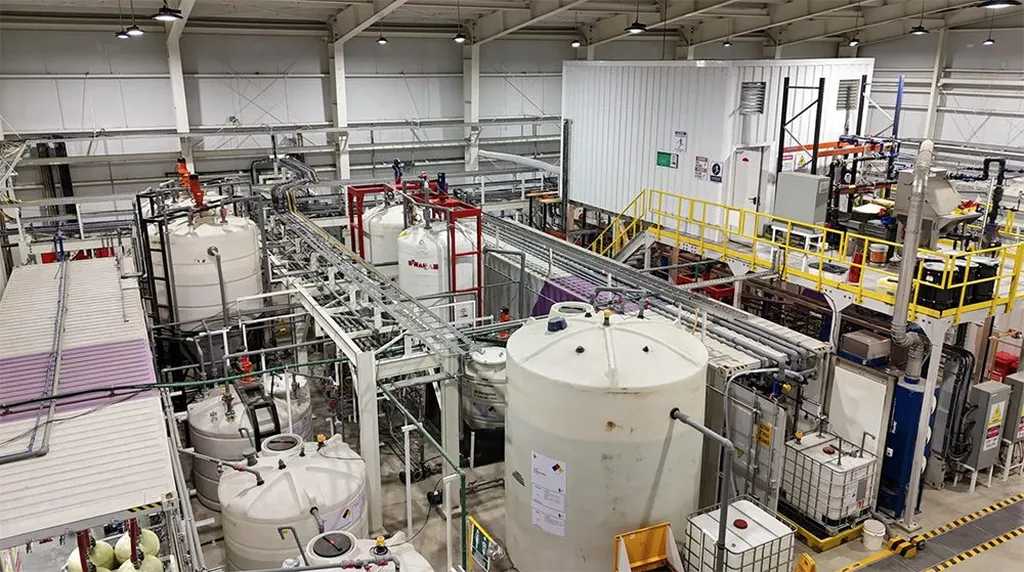Lilac Solutions has made a significant stride in the lithium extraction industry with its innovative direct lithium extraction (DLE) technology. The company’s method, which uses ceramic beads to attract lithium ions from saltwater, has demonstrated impressive efficiency and purity in recent tests at Utah’s Great Salt Lake. This development could reshape the lithium mining landscape, particularly in regions with low lithium concentrations and water scarcity.
The test facility at Great Salt Lake recovered an average of 87% of available lithium with a purity of 99.97%. Notably, the saltwater at this site has a low lithium concentration of just 70 parts per million, much lower than other potential extraction sites like the Salton Sea in California or Argentina. Raef Sully, CEO of Lilac Solutions, emphasized that the technology’s success in such challenging conditions underscores its versatility. “The low concentrations actually demonstrate the technology’s capability,” Sully stated. “If the method works here, it can be used in many different locations.”
Lilac Solutions’ technology stands out for its water efficiency. The company claims its process requires only a tenth of the water compared to alumina-based DLE technologies currently dominating the industry. This is a critical advantage, especially in water-scarce regions like the western United States, where traditional lithium extraction methods face increasing opposition due to their high water consumption.
The company plans to build its first commercial facility at Great Salt Lake, with production scheduled to begin in the second half of 2027. This facility is expected to produce 5,000 tons of lithium per year, effectively doubling the current annual lithium production in the United States. A full-scale plant using the same technology could potentially produce three to five times that amount. This would mark the first new commercial lithium source in the U.S. in several years and the first-ever commercial-scale DLE facility.
Unlike many of its competitors, Lilac Solutions does not intend to produce lithium itself in the long term. Instead, the company aims to become a technology provider, selling its DLE systems to other companies. The pilot plant at Great Salt Lake is operated under a separate company to facilitate a potential sale. Sully revealed that Lilac Solutions is targeting energy giants like Exxon Mobil, Chevron, and Occidental Petroleum, which are exploring lithium extraction in the Smackover region of Arkansas. The U.S. Geological Survey has identified up to 19 million tons of lithium in the underground saltwater of this region.
Kwasi Ampofo, a researcher at energy consultancy BloombergNEF, noted that most companies typically aim to control the entire value chain once their technology proves successful. Lilac Solutions’ decision to focus on technology licensing represents a strategic departure from this norm. “They’re choosing a different path as a technology provider,” Ampofo observed.
The ability to economically extract lithium from low-concentration sources could significantly expand the industry’s geographical reach. Milo McBride, a fellow at the Carnegie Endowment for International Peace, highlighted the appeal of such a technology. “A technology that can extract lithium economically from different types of resources in different environments is attractive,” McBride said. Lilac Solutions’ ceramic beads are particularly well-suited for locations with low lithium concentrations, offering a flexible and scalable solution.
Traditional lithium extraction methods in the U.S., such as hard-rock mining and evaporation ponds, have faced growing resistance. The Thacker Pass mine in Nevada, for instance, has been the subject of protests and lawsuits from conservationists, ranchers, and Native American tribes concerned about the project’s impact on underground freshwater reservoirs. Additionally, water shortages in the western U.S. have made it increasingly difficult to plan for new evaporation ponds. Direct lithium extraction, with its lower land and water requirements, presents a more sustainable alternative.
The implications of Lilac Solutions’ technology extend beyond the U.S. The company has a test facility in Argentina and is actively pursuing partnerships with international energy companies. As the demand for lithium continues to rise, driven by the global transition to electric vehicles and renewable energy storage, innovative extraction methods like Lilac Solutions’ could play a pivotal role in meeting this demand while minimizing environmental impact.
In summary, Lilac Solutions’ DLE technology offers a promising solution to some of the most pressing challenges in the lithium mining industry. Its water efficiency, high recovery rates, and ability to operate in low-concentration environments position it as a potential game-changer. As the company moves toward commercialization, its impact on the sector’s development and sustainability will be closely watched.

